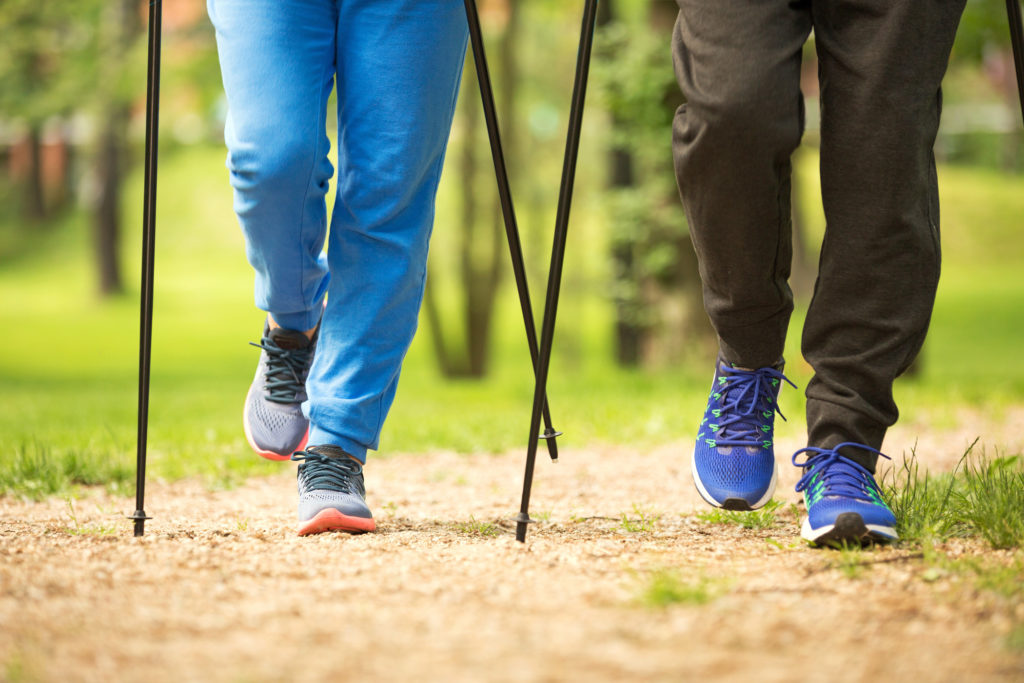Article
Fitness Tips
 Gait is the medical term for the way you walk and includes not only the mechanics of walking, but the speed as well.
Gait is the medical term for the way you walk and includes not only the mechanics of walking, but the speed as well.
Why is Gait Speed Important?
- Gait speed is an indicator of your overall health and life expectancy. Improving your walking speed is associated with improved survival rates.
- Senior walking ability begins to decline past 65. As we age our walking can become slower, less coordinated, less stable, less efficient, and have poor timing. With potential decline in vision and hearing as well as our posture becoming less upright and flexible, it makes it harder for us to respond to our environment when walking.
- In order to be able to cross the street safely in time before the light changes, you need to be able to walk 1.14 meters/second. People who have a walking speed of less than 1 meter/second have reported ceasing involvement in any regular physical activity
- You can assess your own gait speed and a program including strengthening, stretching, balance training, postural improvements, and task-specific exercises can ALL help to increase walking speed!
How to Assess your own Walking Speed using the 10 Meter Walk Test
What you will Need: 10 meters of clear space measured. Add a mark at the first 2 meters and then a mark at 8 meters (see below). You will also need a stopwatch and a friend or family member to help time you (optional)
- Perform 2 trials of walking: One at your comfortable walking speed and another at a fast walking speed
- Begin walking: Start the timer when any part of the leading foot crosses the 2-m mark. Stop the timer when any part of the leading foot crosses the 8-m mark.
- The time will be measured for the middle 6 meters.
- You can use any assistive device that you typically use to walk (I.e. cane, walker).
- Your gait speed will be the time divided by 6 m
Average Gait Speed by Age:
- Age 50 to 59: 1.43-1.31 meters/second
- Age 60 to 69: 1.34 – 1.24 meters/second
- Age 70 to 79: 1.26 – 1.23 meters/second
- Age 80 to 99: 0.97 – 0.94 meters/second
Ways to Improve your Gait Speed:
There are 2 primary approaches to improving your gait speed.
1. Address the physical changes that occur in the body as we age. This works on the “machinery” we need to walk. This includes working on strengthening and stability of our legs and trunk as well as flexibility of our joints so our limbs can move efficiently. A review of research studies showed that resistance training to strengthen lower extremity muscle was the most effective way to improve gait speed.
| Exercise | Examples |
| Strengthen muscles of legs | -Repeated standing/sitting from a chair -Heel raises (Standing with support, rising onto toes and then back down) |
| Improve flexibility in legs | -Calf Stretch -Hamstring Stretch -Hip flexor Stretch |
| Aerobic exercise | -Cycling, elliptical, treadmill, etc. |
2. Train your brain to walk more efficiently. Practice makes perfect – by practicing we restore and improve the brain’s pattern to engage muscles to better meet the demands of walking.
| Task | Examples |
| Practice walking | -Increase gait speed for short distances -Walk forward, sideways, & backwards -Practice walking while carrying objects -Practice walking in a figure-8 pattern -Practice walking while counting or to a beat to make walking more rhythmical |
| Add obstacles to walking | -Place objects on floor and practice stepping over and walking around them |
| Varied surfaces | -Practice walking on various surfaces (I.e. grass, carpet, gravel) |
A combined and individualized approach always works best! If you have any questions or concerns about your gait or would like advice on what exercises you can do to help, feel free to contact a Physical Therapist at one of our offices to make an appointment. We would love to help you achieve your goals and get you right out of the gate again.
“If you don’t like the road you’re walking, start paving another one” ~ Dolly Parton

